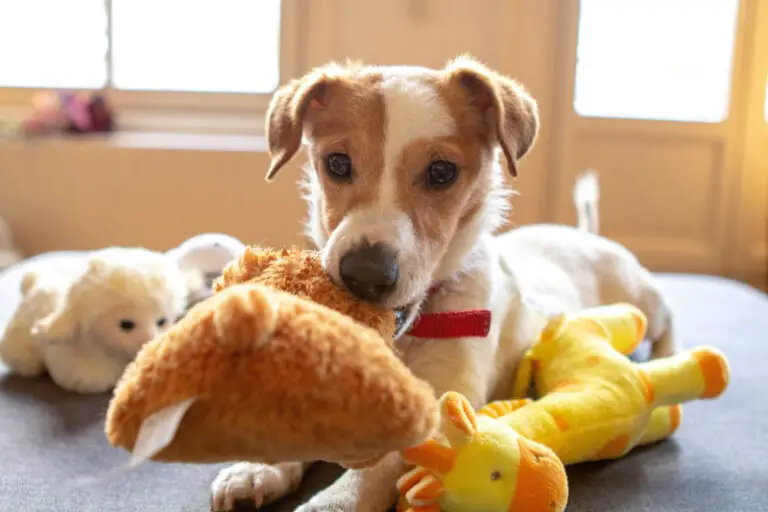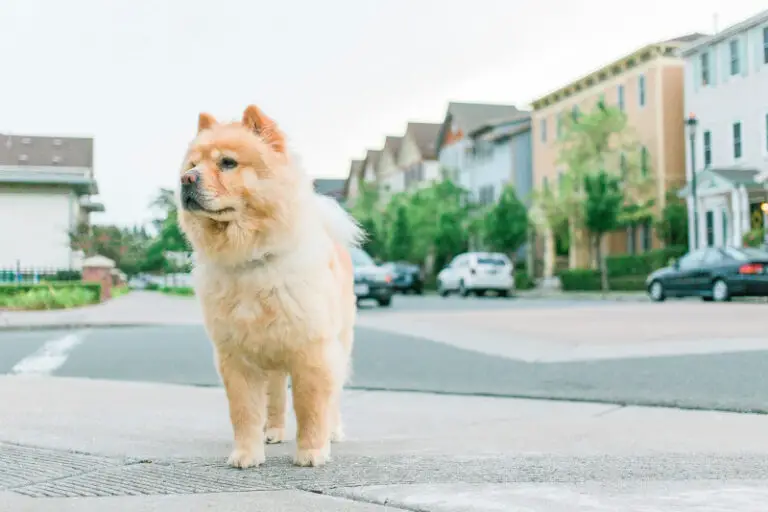To achieve the acceptance of a second dog in the home, it is important to start off on the right foot, paying special attention to the moment of introduction. Two dogs that are going to live together can take several weeks to get used to each other, so you need to be strategic and have some patience.
Don’t know how to get two dogs to get along? At Sweet Doggo we are pleased to offer you a basic guide to getting two dogs to accept each other and end up being friends.
Table of Contents
How to get two dogs to get along?
The first thing to consider before bringing a new dog home is choosing the most compatible companion for the current dog. Whether you want to buy a puppy or adopt a dog from your local shelter, take some time to assess how compatible temperament, life history, and training. This can prevent unnecessary headaches later on.
For example, if your dog is active and outgoing, consider bringing a dog with similar qualities. If your dog is quiet and reserved, find a companion that complements his lifestyle.
That said, let’s see what are the steps and recommendations to follow so that your dogs get along with each other…
- Introduce them into neutral territory
- Keep them apart (at first)
- Monitor all interactions
- Let them establish a domain hierarchy
- Strengthen obedience training
- Pay attention to body language
- Provide the same level of care
Keep reading below and learn what is the best way to proceed at each step to get two dogs to get along…

How to get two dogs to get along?
1. Bring them into neutral territory
The big mistake some owners whose dogs get along badly make is making an inappropriate introduction. You can’t just throw a new member into another dog’s or pack’s territory and expect them to get along. They may accept it, but most likely they won’t.
There is always the risk of the current dog becoming aggressive to defend what is his, or the new dog becoming completely fearful and submissive.
The most advisable thing to introducing two dogs that are going to live together is that they first meet in neutral territory, that way the current pet will not feel threatened. A good way to do this is by walking. Walking together in neutral territory (park, trail, etc.) allows you to sniff, meet, and greet each other.
Expert Tip: Each dog should be on a leash and walked by a different person. At first, they should not be allowed to walk too close to each other, as they may feel threatened by the presence of another dog. If you notice signs of tension, it is best to separate them immediately.
Once the two dogs seem tolerant of each other, it’s time to bring them home. The person must enter first, followed by the dog that already lives in the home, and lastly, the new dog.
2. Keep them apart (at first)
Some people believe that the more two dogs interact at home, the faster they will get along. But unfortunately, this usually doesn’t work.
It is very important that both dogs are kept apart until they have acclimated to each other. That means they must stay in separate areas and have their own space to eat, sleep, play, train, and receive attention from the owner.
Each dog should have its own food bowl, water bowl, toys, and bed to rest on.
As you get used to each other during encounters on neutral ground, you can begin to let them see each other inside the home. Placing a baby gate is a good alternative to allow them to see each other from one room to another, but without coming into direct contact.
When you feel that the two dogs accept each other, get along, and show no signs of hostility, separation is no longer necessary. Reward them for their calm and relaxed behavior.
3. Monitor all interactions
Although the two dogs can be left alone together, it is not recommended to leave them unattended for a long time, at least not in the first few months. Once they’re ready to freely interact, make sure you’re there to supervise. Observe the chemistry and body language, so that you can separate them if any doubts arise.
Your duty is to do everything possible to remain optimistic and calm.
Provide enough toys for them to play with, but take them away if any of them become a source of tension.
Let them eat in the same room. If you notice them starting to fight over food, that’s a sign that they’re not ready to fully accept themselves yet.
Keep in mind that dogs can become protective of certain places in the house, like a bed, the couch, or a window. If your dogs are constantly arguing over access to these sites, make the place inaccessible to both of you. Then gradually reintroduce them.
4. Let them establish a domain hierarchy
As their nature dictates, dogs are pack animals. Each pack has a leader, that is, an alpha dog that dominates and leads the other members. As the renowned dog trainer/behavior expert Cesar Millan explains in his article Hierarchy of the Dog Pack, “dogs are happier when they have structure… followers want to be told what to do and to know what the leader expects of them.”
Your pack must have a leader. Your dogs will instinctively compete to become the alpha of the pack. It is normal for this to happen when you have more than one male dog at home. The interesting thing is that the owner and his family are also considered part of the hierarchy.
Make sure you occupy the alpha position in the group because if your dogs see you as a leader, they will not see each other as rivals within the pack and therefore, there is a better chance that they will get along.
5. Strengthen obedience training
Obedience training is essential to have better control of your dogs and avoid the risk of a fight occurring. Basic commands like “sit”, “stay” or “down” are essential. This type of training can take time and effort, but what matters is the end result.
Both pets must be trained in the same way. Not all dog breeds have the same ability to accept a command, request, or discipline training in general. However, it is known that when dogs work in pairs, it is easier for them to understand each other and end up getting along.
Expert Tip: If you don’t have time to train your dogs, it’s a good idea to sign them up for a training course or hire a professional to work with them as well.
6. Pay attention to body language
Look closely at the posture or body language of the dogs as they interact. Separate them immediately if you notice signs that indicate defensive or aggressive behavior, such as baring teeth, staring, stiff tail, forward ears, bristling back hair, etc. You should only allow them to interact again when they are calm and relaxed.
Related Article: Anxiety in Dogs: Causes, Types, Symptoms + How to Calm it Down
7. Provide the same level of care
This is one of the most important things you can do to make two dogs friends, especially if they often get along badly. Make sure you give them the same attention every day. If you make the mistake of paying more attention to one of the two, the other dog can feel neglected and jealous, which in turn leads to a tense and hostile relationship between them.
Give them the same love, playtime, socialization, and training.
Other basic tips for owners
- Be patient. The coexistence of two dogs can resemble sibling rivalry. Just because they hate each other and don’t get along now doesn’t mean they’ll never get along. Be patient and be consistent; you will see that your dogs learn to live together in a short time.
- Try new tactics. If after several weeks, two dogs do not seem to accept each other, it might be time to change the strategy, for example, using the canine sense of smell. While the veteran dog is locked up, allow the new puppy to come out of his crate or room and explore the rooms. The idea is to get him to leave his scent impregnated everywhere to familiarize the current dog. Then repeat the same procedure, but swapping the dogs.
- Doing this multiple times can help pets get used to and begin to accept each other during a neutral zone meeting.
Be the leader. In either case, the owner should be the alpha male of the pack, show authority, and make both dogs feel comfortable and under control. When they understand that you are in charge, they will be less aggressive and rebellious towards each other. The job is done when your pets can get along, even if you’re not by their side.
Quick Answers to Frequently Asked Questions

How to introduce two dogs that are going to live together?
According to experts and experienced owners, this is the correct way to introduce two dogs that are going to live together:
- Promote a meeting in a neutral zone with the help of another person; it can be in the neighborhood, a nearby park, or a trail.
- Start a long walk during which both dogs can sniff each other and interact while on a leash. It is important to be on the lookout for possible signs of aggression. One of the dogs should not be allowed to aggressively bite the other, or engage in a fight.
- After introduction into neutral territory and only if they seem to get along, they can be introduced to the house. Once inside, territorial disputes over toys, attention, etc. could arise. One of the dogs will try to assume the dominant position and the owner cannot help but decide which one it will be.
- It is not recommended to stop fighting immediately unless one or both dogs are fighting aggressively. Biting, barking, and herding are also ways that dogs show dominance and establish the alpha position. It’s best to keep one or both straps initially so you can pull on them if necessary.
How do two dogs present themselves when one is aggressive?
When introducing two dogs, one of them may become aggressive towards the other, either because he is afraid or because he is trying to show dominance. To get an aggressive dog to behave calmly and submissively, it is necessary to hold it tightly, showing leadership and assertiveness.
With both dogs on a leash, try to have them walk parallel to each other. This reduces aggressive energy and allows them to work together on a common goal: walking.
Canine aggression is often associated with a lack of exercise. Once the aggressive dog burns off the excess energy, he adopts a healthier state of mind.
Why don’t my two male dogs get along?
Although many dogs seem to get along with every dog they meet, others have their own preferences, probably related to age, size, scent, or breed type.
One of the main reasons why two male dogs can get along badly is age. For example, some adult dogs can’t tolerate the relentless energy of rambunctious puppies; An old, sick dog may also feel uncomfortable in the presence of other dogs that are used to roughhousing.
But, even dogs of similar age can have problems related to their social status. It is common for two dogs of the same age to want to compete for the dominant position within the home.
Another explanation for why two dogs don’t get along has to do with the circumstances of their introduction. Dogs that are not introduced correctly can develop long-lasting negative feelings for each other. The first meeting between two dogs largely determines what future interactions will be like.
Consider that sometimes male dogs just aren’t accepted for reasons we’ll never understand. Even when proper introduction protocols are followed and the dogs are similar in age, size, and temperament, there is a chance that they will not enjoy being together.
How long does it take two dogs to get used to each other?
The acceptance process between two dogs that live together can vary depending on several factors, but in general, this usually takes about a month. It is the average time it takes for a dog to adapt and accept the other’s position in “the pack”.
As an owner, it is important to commit and not panic. Not a few are surprised to see how two dogs that seemed to hate each other end up becoming good friends after a while.
Which dogs tend to get along with other dogs?
Thinking of having several dogs together at home? Here are some of the breeds that get along best with other dogs:
- Basset hound
- Barbet
- Beagle
- Goldendoodle
- Cocker spaniel
- Bolognese bichon
- Bichon frize
- Saint Bernard
- Great Dane
- Vizslas
- Whippet
- Pug
- Pointers
- Coton de Tulear
- Cavalier King Charles spaniel
- American mastiff
What to do when two dogs fight?
Sometimes even nearby dogs can end up fighting. This usually happens when one of them does not respect the space of the other, and what starts as a correction turns into a conflict. As an owner, the first step is to quickly and calmly stop the fight, concentrating on the dog with the highest level of hostility.
Use touch to redirect his attention (force him to let go if he’s biting), then pull him up (not back).
It is advisable to take them out for a walk together, side by side. This type of exercise not only helps decrease their energy and therefore the urge to fight, but also makes them share the same goal.
Reward them when they are calm and submissive, and correct them whenever they are not.
In the event of a fight between two dogs, never shout or show excitement; that would only increase the aggressiveness. It will make a loud sound, but always calmly. The important thing is not the voice, but the energy transmitted.
The worst thing you can do if you have fighting dogs is to ignore the problem by isolating them from each other. Separating them will cause each of them to behave more territorially. Socialization is key to getting both of you balanced.
Remember: As the leader of the pack, you need to act with authority and set limits/rules. If all your dogs see you as a leader, they won’t see each other as competition.




